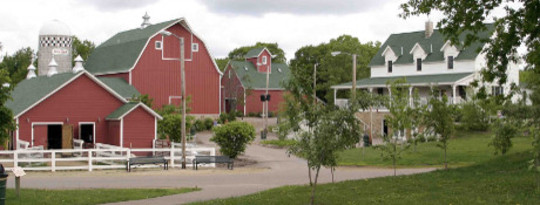
A United Nations designation provides the perfect opportunity to invest in small- and medium-sized farms.
In the broad discussion of agriculture, family farmers often don’t get as much attention as large-scale industrial farming operations. And they often don’t get the support they need, despite their potential to implement environmentally sustainable solutions to hunger, obesity and poverty. Fortunately, the United Nations has designated 2014 the International Year of Family Farming to celebrate the world’s more than 400 million family farmers, creating a ripe opportunity for eaters, non-governmental organizations, research institutions, governments, and the funding and donor communities to resolve to invest in family farmers.
Family Farms Improve Yields and Boost Local Markets
On average in many developing countries, family farms account for up to 80 percent of all farm holdings and feed billions of people. Meanwhile, forthcoming reports by the U.N. Food and Agriculture Organization and Food Tank suggest that through local knowledge and sustainable, innovative farming methods, family farmers can improve yields and create a more nutrient-dense and diverse food system as well as supply jobs to millions and boost local markets.
But small- and medium-sized family farms are struggling across the world. One bad harvest, too much or too little rain, or a rejected bank loan could drive farms out of business. In 2012, for example, a drought cost farmers in the United States some $35 billion and reduced American GDP by up to 1 percent. And poor weather and volatile food prices continue to afflict farmers in the Sahel of Africa, India and elsewhere.
In many parts of the world, however, farmers, NGOs and policy makers are finding ways to create resilience in the family farm system.
In California, for example, organizations such as the Community Alliance with Family Farmers are reaching out to farmers with educational tools and resources, including information-sharing programs and technical assistance, while winegrowers in drier areas of the state are integrating water conservation and other sustainable techniques into their farms. In Missouri, Cultivate Kansas City is connecting eaters to existing farms where food is grown, harvested and sold entirely within the confines of Kansas City, as well as starting a series of urban farms.
For family farmers in countries such as Niger with both a dry season and a wet season, irrigation represents a chance to double the amount of crops they can grow in a year. But diesel-powered irrigation can be expensive, and watering crops by hand is time consuming. Solar drip irrigation represents a potentially transformative technology for many such farmers. The technology combines solar photovoltaic water-pumping and low-pressure drip irrigation. This enables farmers in remote, dry regions to grow crops that are high in nutritional and monetary value year-round.
The International Crops Research Institute for the Semi-Arid Tropics has been working with women farmers to establish market garden cooperatives and training them to use and maintain solar drip lines, which has helped triple their incomes. And the Solar Electric Light Fund, a nonprofit organization based in the U.S., is working to implement solar technology in other developing countries to reduce poverty through agricultural and other forms of development.
Family Farming Can Be a Growth Industry
Family farming can be a growth industry — one that the world desperately needs. A 2002 World Bank report [PDF] examining 61 countries with contributions from more than 400 agricultural scientists determined that small-scale farms have the best potential for alleviating global hunger. But young people in both developing and industrialized countries often see agriculture as something forced upon them, not as something they want to do, which calls into question future growth possibilities. The average age of both American and African farmers is more than 55 years — making engagement of the next generation of food producers and leaders a critical issue if we are going to capitalize on such possibilities. Organizations such as Food Corps in the U.S., Developing Innovations in School Cultivation in Uganda and Slow Food International’s 1,000 Gardens in Africa project are reaching out to young people to show them the importance of and the connection between our food system and our environment.
While the significance of family farming and its potential for a more sustainable food system are clear, a lot of work is still necessary on the ground to get coherent state, national and international policies to strengthen family farmers.
Over the next year, let’s remember that these farmers aren’t just food producers — they’re business women and men, they’re teachers in their communities, they’re innovators and inventors, and they’re stewards of the land who deserve to be recognized for the work they do that benefits us all.
This article originally appeared on Ensia
 About The Author
About The Author
Danielle Nierenberg is a co-founder and President of Food Tank and an expert on sustainable agriculture and food issues. She has written extensively on gender and population, the spread of factory farming in the developing world, and innovations in sustainable agriculture.
Recommended book:
State of the World 2013: Is Sustainability Still Possible?
by The Worldwatch Institute.
 In the latest edition of Worldwatch Institute’s State of the World series, scientists, policy experts, and thought leaders attempt to restore meaning to sustainability as more than just a marketing tool. State of the World 2013 cuts through the rhetoric surrounding sustainability, offering a broad and realistic look at how close we are to fulfilling it today and which practices and policies will steer us in the right direction. This book will be especially useful for policymakers, environmental nonprofits, and students of environmental studies, sustainability, or economics.
In the latest edition of Worldwatch Institute’s State of the World series, scientists, policy experts, and thought leaders attempt to restore meaning to sustainability as more than just a marketing tool. State of the World 2013 cuts through the rhetoric surrounding sustainability, offering a broad and realistic look at how close we are to fulfilling it today and which practices and policies will steer us in the right direction. This book will be especially useful for policymakers, environmental nonprofits, and students of environmental studies, sustainability, or economics.
Click here for more info and/or to order this book on Amazon.
























